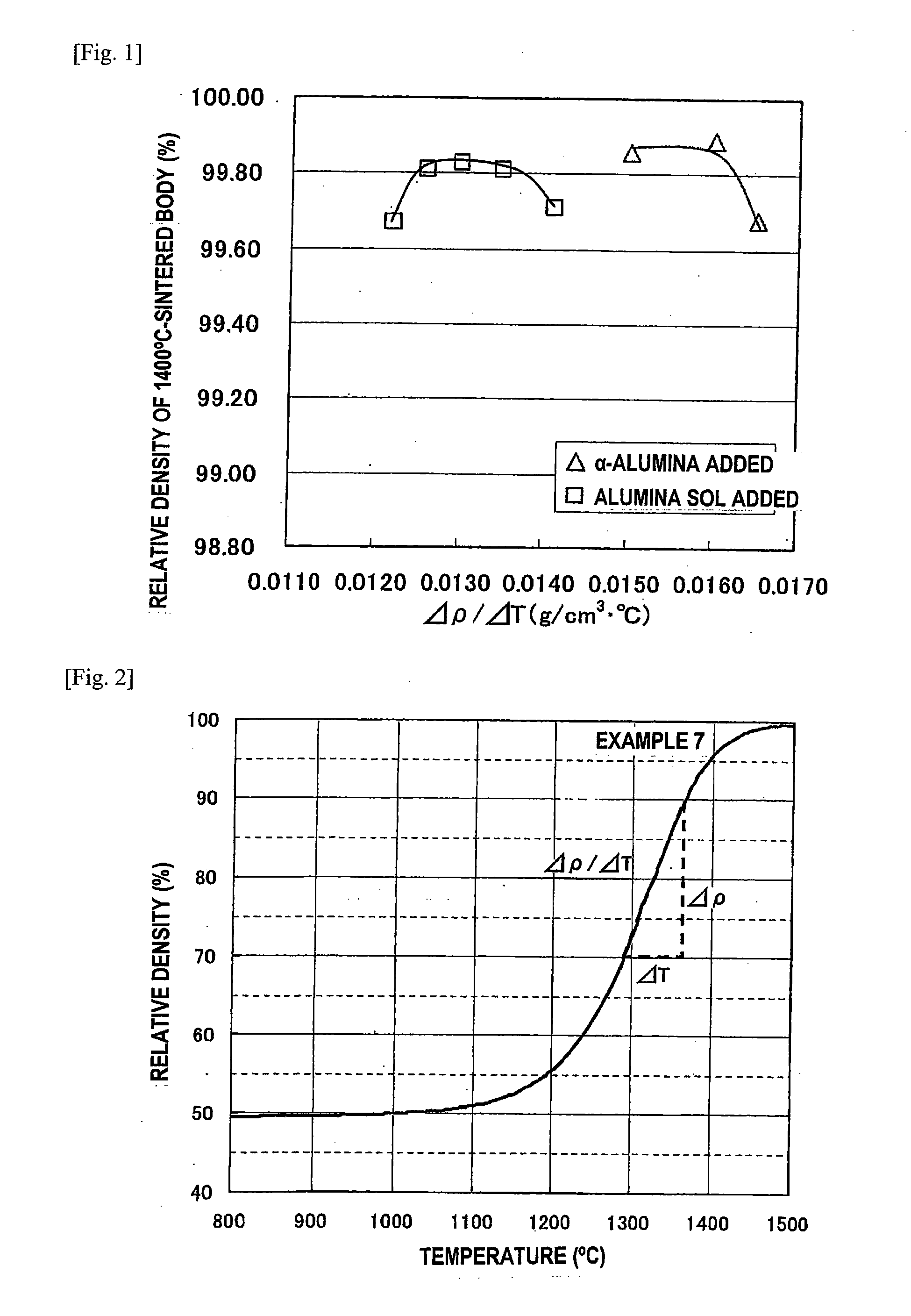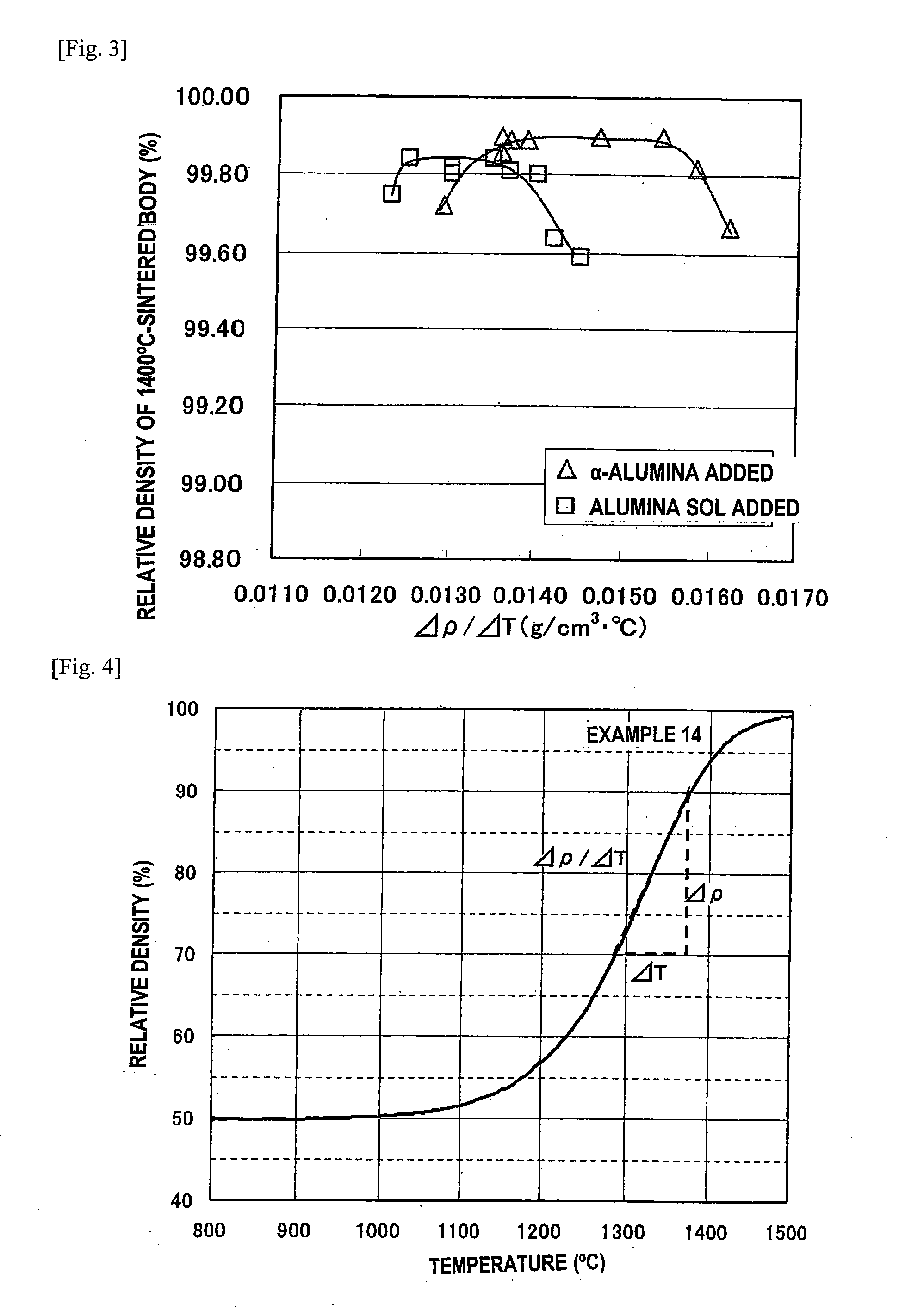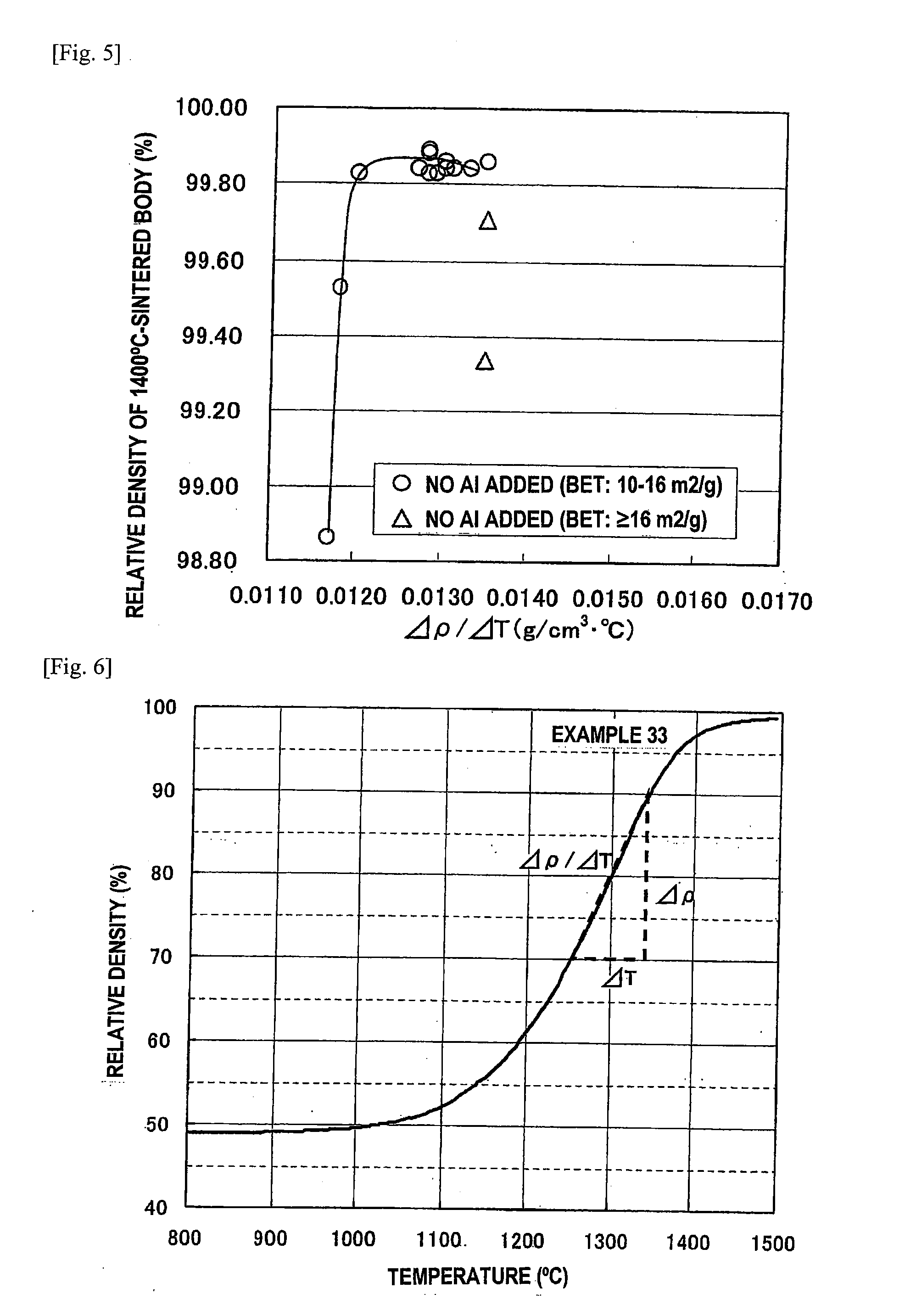Translucent zirconia sintered body, process for producing the same, and use of the same
a zirconia and translucent technology, applied in the field of zirconia sintered body, can solve the problems of inability to give a sense of translucency, difficulty in achieving the effect of translucency, and difficulty in achieving the effect of high density, excellent translucency and high strength
- Summary
- Abstract
- Description
- Claims
- Application Information
AI Technical Summary
Benefits of technology
Problems solved by technology
Method used
Image
Examples
example 1
[0067]An aqueous solution of potassium hydroxide was added to a 0.4 mol / L aqueous solution of zirconium oxychloride to prepare an aqueous solution having a molar concentration ratio [OH] / [Zr] of 0.02. While this solution was being stirred in a flask equipped with a reflux condenser, a hydrolysis reaction was conducted at the boiling temperature for 350 hours. The conversion to the hydrated zirconia sol obtained was 99%. Distilled water was added to this hydrated zirconia sol to prepare a solution having a concentration of 0.3 mol / L in terms of zirconia concentration. This solution was used as a starting solution to conduct a hydrolysis reaction at the boiling temperature for 200 hours while intermittently discharging 5% by volume of the solution from the reaction vessel and feeding an aqueous zirconium oxychloride solution to which 0.3 mol / L aqueous sodium hydroxide solution had been added ([OH] / [Zr]=0.02). This aqueous zirconium oxychloride solution was fed at intervals of 30 minut...
example 2
[0073]A zirconia powder was obtained in the same manner as in Example 1, except that the alumina sol was added in an amount of 0.12% by weight in terms of alumina content. The properties of the zirconia powder obtained are shown in Table 1. Thereafter, the zirconia powder obtained was dispersed in water to obtain a zirconia slurry having a slurry concentration of 50%. An acrylic binder and poly(vinyl alcohol) were added to the slurry in an amount of 3 wt % based on the zirconia contained in the zirconia slurry, and a thickener was added to regulate the viscosity. Thereafter, the slurry was granulated by spraying to produce zirconia granules. The zirconia granules obtained had an average particle diameter of 45 μm and a bulk density of 1.20 g / cm3.
[0074]Subsequently, the zirconia granules obtained above were press-molded by CIP (pressure, 2 t / cm2) and sintered under the conditions of 1,450° C.
[0075]The sintering temperature for the sintered body obtained and the properties of the sint...
example 3
[0077]A zirconia powder was obtained under the same conditions as in Example 1, except that the alumina sol was added in an amount of 0.17% by weight in terms of alumina content. The properties of the zirconia powder obtained are shown in Table 1. This zirconia powder was used to obtain zirconia granules by the same method as in Example 2. The zirconia granules obtained had an average particle diameter of 40 μm and a bulk density of 1.18 g / cm3.
[0078]Subsequently, the zirconia granules obtained above were press-molded and sintered under the conditions of 1,400° C. The sintering temperature for the sintered body obtained and the properties of the sintered body, i.e., density, bending strength, crystal grain diameter, and monoclinic fraction after the deterioration test, are shown in Table 2.
[0079]The sintered body obtained had a total light transmittance of 39% and was ascertained to be a sintered body having excellent translucency. The monoclinic fraction after the deterioration test...
PUM
| Property | Measurement | Unit |
|---|---|---|
| total light transmittance | aaaaa | aaaaa |
| thickness | aaaaa | aaaaa |
| total light transmittance | aaaaa | aaaaa |
Abstract
Description
Claims
Application Information
 Login to View More
Login to View More - R&D
- Intellectual Property
- Life Sciences
- Materials
- Tech Scout
- Unparalleled Data Quality
- Higher Quality Content
- 60% Fewer Hallucinations
Browse by: Latest US Patents, China's latest patents, Technical Efficacy Thesaurus, Application Domain, Technology Topic, Popular Technical Reports.
© 2025 PatSnap. All rights reserved.Legal|Privacy policy|Modern Slavery Act Transparency Statement|Sitemap|About US| Contact US: help@patsnap.com



